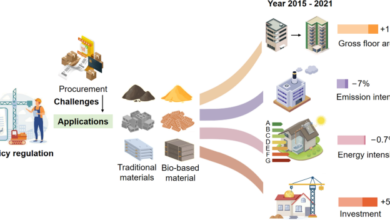Best Practices for Implementing HCC Medical Coding in Medicare Advantage Plans

Picture this: A coding team at a busy healthcare facility is overwhelmed by the complexities of Hierarchical Condition Category (HCC) medical coding. Every day, they face the pressure of ensuring that their risk adjustment coding is accurate and compliant with Medicare guidelines. With constant changes in regulations, the team often wonders, “Are we doing this right?” This struggle is not uncommon. Implementing accurate HCC medical coding in Medicare Advantage plans is no easy task, but it is critical for maintaining compliance, optimizing reimbursements, and ensuring proper patient care. Fortunately, by following proven best practices, healthcare providers and coders can simplify the process and achieve better outcomes.
HCC risk adjustment coding plays a pivotal role in Medicare Advantage plans. It determines how much healthcare organizations get reimbursed based on their patients’ health status. If the coding is done accurately, it reflects the true complexity of patient conditions, ensuring that providers receive appropriate payments. On the flip side, mistakes in coding can lead to underpayments, compliance risks, and even audits. So, how can healthcare providers implement best practices for HCC medical coding to avoid these pitfalls? Let’s break down the strategies that can help healthcare organizations achieve accuracy, compliance, and optimal financial outcomes.
Thorough Documentation: The Backbone of Accurate HCC Coding
One of the fundamental best practices for HCC medical coding is ensuring thorough and precise documentation. Every diagnosis captured must be well-documented in the patient’s medical records. Coders can only assign HCC codes when the documentation is complete and accurate. For example, a diagnosis of diabetes with complications must detail what those complications are, how the condition is being managed, and what treatments are being provided.
The “MEAT” criteria—Monitor, Evaluate, Assess, and Treat—are essential guidelines that can be used to ensure complete documentation. Coders should be trained to look for these elements in medical records. If any part of the MEAT criteria is missing, the diagnosis may not qualify for HCC coding. By ensuring that documentation is complete and follows these guidelines, healthcare providers can ensure compliance and maximize reimbursements.
Regular Audits: A Critical Tool for Maintaining Accuracy
Even the best coding teams can make mistakes. That’s why regular internal audits are essential to maintaining coding accuracy. Audits help identify gaps, errors, or inconsistencies in HCC risk adjustment coding. They also provide an opportunity to review whether all relevant diagnoses have been captured and coded correctly.
Audits should be performed regularly and should involve a thorough review of medical records and coding decisions. During these audits, coders should check for any missing diagnoses, ensure that the documentation meets the MEAT criteria, and verify that the correct HCC codes have been applied. In some cases, external audits can be beneficial, as they provide an objective review of coding practices and offer insights into areas for improvement.
Ongoing Training: Keeping Coders Up-to-Date
Coding regulations are constantly changing, and staying updated on the latest guidelines is essential for accurate HCC risk adjustment coding. Ongoing training for coders is a must, as it ensures they are familiar with the most recent updates to the International Classification of Diseases (ICD) codes and Medicare guidelines.
Training should be both formal and informal, involving workshops, webinars, and regular team meetings to review new updates. It’s also helpful to create a culture of continuous learning, where coders are encouraged to ask questions and seek clarification on complex coding issues. When coders feel confident in their knowledge, they are more likely to code accurately and avoid mistakes.
Advanced Coding Software: Reducing Human Error
While thorough documentation, audits, and training are critical, leveraging technology can further streamline the process and improve accuracy. Advanced HCC coding software can help coders identify potential errors, suggest the correct HCC codes based on patient records, and ensure compliance with the latest Medicare guidelines.
Many coding software tools come with built-in features that cross-reference diagnoses with ICD-10 codes, flag inconsistencies, and even alert coders when documentation is incomplete. These tools can significantly reduce human error and save coders time by automating parts of the process. For healthcare providers managing large volumes of patient records, using advanced coding software is essential to maintaining accuracy and efficiency.
Implementing a System for Quality Control
In addition to regular audits, having a system for continuous quality control can help maintain coding accuracy over time. This system should involve regular reviews of coding performance, feedback loops for coders, and the use of metrics to track coding accuracy rates.
Quality control can be implemented by designating a team member to serve as a coding supervisor, responsible for reviewing random samples of coded charts, providing feedback, and ensuring compliance with best practices. This process helps to identify patterns of errors, address issues before they become larger problems, and ensure that coders are consistently adhering to established guidelines.
Collaboration Between Coders and Providers
One common challenge in HCC medical coding is the disconnect between coders and healthcare providers. Coders rely on the documentation provided by physicians to assign accurate HCC codes, but often, this documentation is incomplete or unclear. To address this, coders and providers must work closely together to ensure that all relevant diagnoses are captured and documented properly.
Building strong communication channels between coders and healthcare providers can help bridge this gap. Regular meetings between the coding team and physicians can facilitate better understanding and collaboration, ensuring that providers are aware of the documentation requirements for HCC coding and that coders have all the information they need to assign accurate codes.
The Financial and Compliance Benefits of Following Best Practices
By following these best practices—thorough documentation, regular audits, ongoing training, advanced software use, quality control, and collaboration—healthcare providers can significantly improve their HCC risk adjustment coding. The benefits are clear: improved accuracy leads to optimized reimbursements, reduced risk of audits, and greater compliance with Medicare regulations.
For Medicare Advantage plans, accurate HCC medical coding is critical to receiving appropriate payments and maintaining financial stability. When coding errors occur, it can lead to underpayments, denied claims, and even penalties for non-compliance. However, by adopting these best practices, healthcare providers can avoid these issues and ensure that their coding processes are efficient, compliant, and accurate.
Conclusion
Implementing HCC medical coding in Medicare Advantage plans is no small feat, but following best practices can simplify the process and lead to better outcomes. Whether it’s ensuring thorough documentation, conducting regular audits, investing in coder training, or using advanced HCC coding software, these strategies are essential for success.
For healthcare providers and coders, the stakes are high. Accuracy in HCC risk adjustment coding not only affects financial reimbursements but also plays a vital role in patient care. By following these best practices, healthcare organizations can improve compliance, optimize reimbursements, and ensure better financial and patient outcomes.
While implementing these strategies can be challenging, they are well worth the effort. Ultimately, they provide healthcare organizations with the tools and processes needed to navigate the complexities of Medicare Advantage plans and succeed in the long term.
Keep an eye for more latest news & updates on USA Techmagazine!





